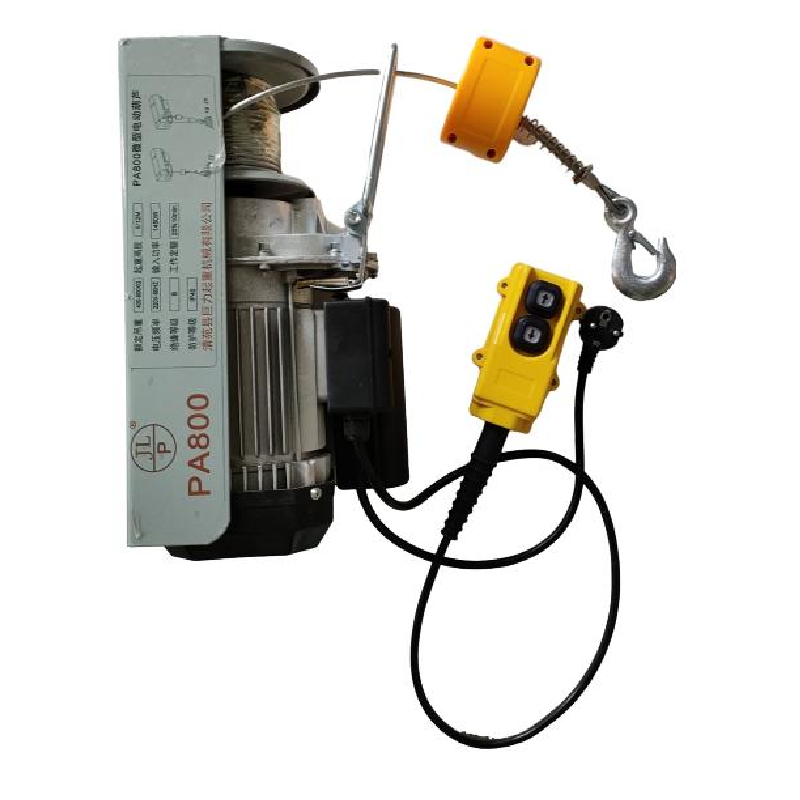


If you’re moving tools, HVAC units, or bulky renovation materials up a stairwell or to a mezzanine, a micro electric rope hoist is often the simplest, safest answer. I’ve watched crews improvise with pulleys and ladders (please don’t), then switch to a purpose-built unit and never look back. Qingyuan Juli’s Heat-safe Mini Electric Hoist—built in Donglv Industrial Zone, Donglu Township, Qingyuan District, Baoding City, Hebei Province—leans into that real-world practicality with a heat-tolerant motor, tidy form factor, and certifications that actually matter on job sites.
Industry trend check: demand has been shifting toward smaller, plug-and-play hoists for urban construction, facility maintenance, and e‑commerce mezzanines. And yes, people want them quiet, efficient, and certified. The Heat-safe Mini Electric Hoist arrives with ISO9001, CE, and GS approvals, which, to be honest, takes the anxiety out of compliance paperwork.

Many customers say the micro electric rope hoist speeds up day-one setup because installation is, well, straightforward: clamp to a beam or bracket, plug in, test lift, done.
| Product | Heat-safe Mini Electric Hoist |
| Rated load | 100–500 kg options (≈, real-world use may vary) |
| Lifting height | 12–30 m typical |
| Lifting speed | 8–10 m/min (single line) |
| Wire rope | Galvanized high‑carbon, 6×19 IWRC, Ø4–6 mm |
| Motor / duty | AC, S3 25% ED; heat‑safe winding design |
| Voltage | 220–230 V single‑phase or 380–400 V three‑phase |
| Ingress / temp | IP54; ambient −10 to +40 °C (≈) |
| Noise | ≤ 75 dB(A) at 1 m (typical) |
| Certifications | ISO9001, CE, GS |
Frame parts are stamped steel with anti‑corrosion coating; gears use heat‑treated alloy steel; the drum is precision‑machined for rope lay. Wire rope is factory-lubricated. Production follows incoming materials inspection, motor coil impregnation, assembly torque checks, and 100% functional testing.
Type tests typically include: no‑load run, 125% overload lift, brake holding ≥150% rated load, insulation resistance ≥20 MΩ at 500 V, and limit‑switch verification. Service life? In normal S3 duty, around 10,000–20,000 cycles before major overhaul, assuming rope and brake maintenance (yes, maintenance still matters).

• A renovation crew in Tianjin used a micro electric rope hoist to move 300 kg marble tops to a fourth-floor balcony in two hours, cutting labor by half and preventing the usual stairwell drama. • A small 3PL in Shenzhen added two units over their mezzanine; after three months, picker injuries related to manual lifting dropped to zero. Not bad.
| Vendor | Certs | Strengths | Lead time (≈) | Customization |
|---|---|---|---|---|
| Qingyuan Juli (Hebei) | ISO9001, CE, GS | Heat‑safe motor, solid QC, value pricing | 2–4 weeks | Voltage, rope length, hooks, pendant |
| European brand | CE, UKCA, ISO | Premium finish, extensive documentation | 4–8 weeks | Broad options, higher cost |
| Generic importer | Varies | Lowest upfront price | Stock-dependent | Limited |
The design aligns with EN 14492‑2 for powered hoists and general machinery safety per ISO 12100. Use a rated suspension point, keep the rope reeved properly, and check the upper/lower limit switches weekly. Replace wire rope at visible broken strand criteria per EN guidance; don’t wait for “just one more lift.” For hot or dusty environments, the micro electric rope hoist benefits from shorter duty cycles and occasional compressed‑air cleaning.
Options include custom rope lengths, dual hooks, low‑temp grease, wireless remote, and different voltages. For facility managers, adding an I‑beam trolley turns the micro electric rope hoist into a versatile point‑to‑point carrier.
Origin matters for service and parts: this unit ships from Hebei, with 21 years of hoisting manufacturing behind it. Actually, that’s why after‑sales responses tend to be fast—spares are on the shelf.



